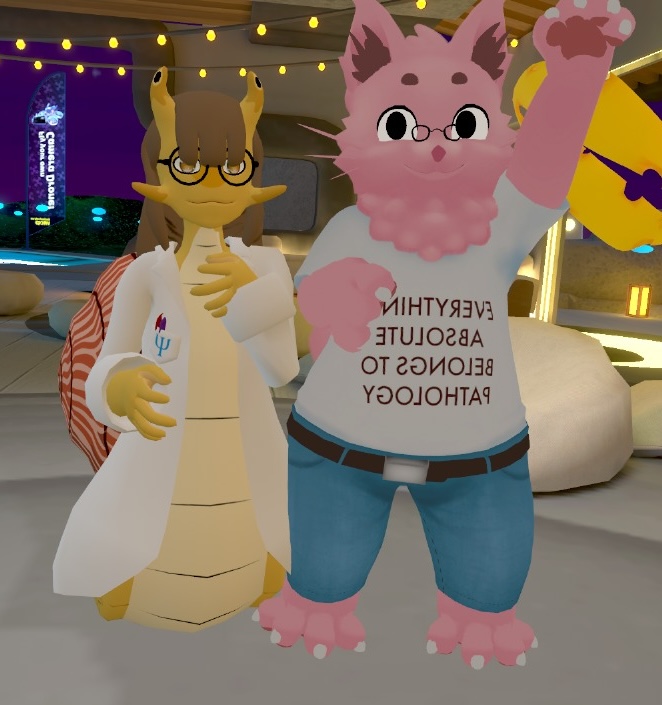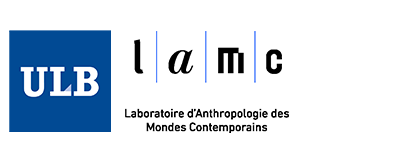Dans la même rubrique
-
Partager cette page
DIGITIMM: Understanding Identity, Affects and Learning in the Age of Virtual Reality
Project in progress
DIGITIMM: Understanding Identity, Affects and Learning in the Age of Virtual Reality
What if becoming someone else, even just for a moment, could help you understand yourself better? Every day, thousands of people around the world slip on virtual reality headsets and enter immersive digital worlds where they can embody a dragon, a robot, a celebrity – or simply another version of themselves. The DIGITIMM project (Digital Immersions) sets out to explore these profound and often surprising experiences, asking how virtual reality is reshaping what it means to be human.
At its core, DIGITIMM is a groundbreaking anthropological and sociological qualitative study of how people use immersive VR technologies not just to play or escape, but to explore, express, and sometimes even reinvent their identities. Through a combination of ethnographic fieldwork, interviews, participant observation and videography in platforms like VRChat, RecRoom, Bigscreen VR, Resonite our researchers are studying how users interact, feel and create meaning in virtual environments.
While many studies of VR focus on technical innovation or clinical applications, DIGITIMM turns attention toward the everyday digital lives of users. These platforms are rich social arenas where people form friendships and communities, fall in love, learn new skills, and experiment with who they are. They are also spaces where digital bodies (avatars) become more than just images on a screen. They are expressive, embodied extensions of the self that form users’ ‘second skin’.
One of the central questions of the project is how this sense of embodiment and immersion changes the experience of identity. When users move, speak, and look around in VR, their avatars move with them in real time. The result is a powerful feeling of "being there", not just watching a virtual world but truly participating in it. Some users describe their avatars as masks that give them the freedom to express secret or repressed aspects of themselves. Others say they feel more authentic in VR than in real life. These claims raise important questions: What does it mean to be "yourself" in a virtual space? How does digital embodiment affect self-image, social interaction, and emotional attachment?
DIGITIMM explores these and other questions by examining several dimensions of immersive digital life:
- The History of Technological Attachments
How do people come to know and to feel emotionally connected to their VR headsets and digital spaces? DIGITIMM traces the personal and social histories that shape these attachments: how people discover VR, what draws them in, and how their relationship to the technology evolves over time. The headset is not just a tool; for many, it becomes a gateway to transformation, discovery, and belonging.
- Avatars, Bodies, and Digital Selves
In VR, your body isn’t just left behind, it’s remade. Users craft their avatars in painstaking detail, often reflecting deeply personal choices. DIGITIMM investigates how people relate to these digital bodies, how they use them to explore aspects of gender, age, fantasy, or aspiration, and how these experiences influence their sense of self.
The project also looks at how movement, gesture, and voice in VR create a new kind of embodied interaction, intensely personal, strangely real, and deeply social. What emerges is a fascinating paradox of tactility: although there is no physical contact in virtual space, the interactions often feel intensely physical. Users hug, dance, cuddle, and engage in virtual sex. We explore how this illusion of touch, this felt presence, shapes emotional attachment, social bonding, and identity expression.
- Communities of Learning
VR is not just a solitary experience. In fact, many users say it’s the social dimension that keeps them coming back. DIGITIMM looks at how communities form in these digital worlds: how people teach and learn from each other, share knowledge, create rituals, and build relationships that often spill over into offline life. From romantic connections to support networks to creative collaborations, these virtual spaces host vibrant cultures with their own norms, aesthetics, and values.
- Virtual Reality and Mental Health
While virtual reality might conjure images of games and fantasy, it is increasingly becoming a space where people confront real-world struggles, especially when it comes to mental health. In platforms like VRChat, users openly share struggles with anxiety, depression, or trauma, often finding comfort and support through their virtual communities. DIGITIMM explores how these digital spaces enable new forms of grassroots care, where people use immersive technologies to express emotions, reshape identities, and build resilience together.
Our papers
Klowait, N. O., & Erofeeva, M. (2023). Halting the decay of talk: How atypical interactants adapt their virtual worlds. Social Interaction: Video-Based Studies of Human Sociality, 6(1). https://doi.org/10.7146/si.v6i1.136903
This study is a first mover exploring Deaf communities in VRChat. The platform is home to several grassroots, cross-cultural communities that bring together Deaf, hard-of-hearing, and hearing individuals to learn sign language, connect across cultures, and foster mutual understanding through immersive virtual reality. The authors challenge the common-sense notion of disability, showing that communication in virtual reality is a function of a skilful use of technology rather than inherent bodily deficit.
Erofeeva, M. (2025). Why does social virtual reality feel so real? A phenomenological study of spatiality, embodiment, and continuity between digital and physical realities. Human Studies. Advance online publication. https://doi.org/10.1007/s10746-025-09796-z
In this study, Maria Erofeeva explores how virtual reality can create social experiences that feel nearly identical to face-to-face interactions. Drawing on the phenomenological sociology of Alfred Schutz and extensive ethnographic research in VRChat, the author argues that embodied avatars and immersive spatial environments foster a strong sense of expressive realism. Yet VR is not just a copy of reality—it also allows users to control, enhance, or purify their expressions, crafting new forms of sociality.
Available: https://rdcu.be/eqVmT
Media
David Berliner (2023, January 12). Identités et métavers. AOC Média.
Available: https://aoc.media/analyse/2023/01/11/identites-et-metavers/
Talk Show with the participation of David Berliner: Du virtuel au réel : comment les jeux vidéo redéfinissent nos relations
Available: https://www.youtube.com/watch?v=QLgGMMGpO2g
Contact
Curious to learn more, collaborate, or share your own virtual experiences? Reach out to the DIGITIMM team—we’d love to hear from you!
Mariia Erofeeva, mariia.erofeeva@ulb.be
David Berliner, david.berliner@ulb.be

